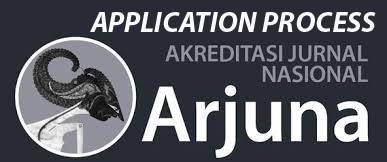Kejelasan Fonetik dalam Pengucapan Bahasa Jerman dan Bahasa Indonesia
DOI:
https://doi.org/10.55606/jubpi.v3i2.3830Keywords:
German, Indonesian, language learning, phonetics, pronunciationAbstract
Phonetics has an important role in clarifying the pronunciation of a language, including in German and Indonesian. These two languages have different phonetic systems, which can affect clarity and understanding in oral communication. This study aims to analyze the phonetic differences between German and Indonesian in terms of vowels, consonants, word stress, and intonation. Using the comparative analysis method, this study examines data from various academic sources as well as direct observation of German and Indonesian learners. The results show that the differences in the vowel and consonant systems present challenges for learners in mastering clear and precise pronunciation. In addition, word stress and intonation in German have a significant influence on meaning, while in Indonesian, pronunciation tends to be flatter and does not experience much change in meaning due to stress differences. This study emphasizes the importance of understanding phonetics in language learning to improve effective speaking skills.
References
Best, C. T., & Tyler, M. D. (2020). Nonnative and Second-Language Speech Perception: Commonalities and Complementarities. Language and Speech, 63(2), 123-145.
Boersma, P., & Hamann, S. (2021). Phonetics and Phonology of Second Language Acquisition: A Theoretical and Empirical Overview. Cambridge University Press.
Escudero, P., & Boersma, P. (2021). Optimal Learning in Second Language Phonology: Theoretical and Practical Implications. Bilingualism: Language and Cognition, 24(3), 245-262.
Flege, J. E. (2022). Second Language Speech Learning: The Role of Phonetic Input and Native Language Influence. Annual Review of Applied Linguistics, 42, 55-78.
Haryono, T. (2021). Fonetik dan Fonologi Bahasa Indonesia: Kajian Teori dan Praktik. Jakarta: Pustaka Bahasa.
Jahrani, M. A., et al. (2023). Perbedaan Fonologi Bahasa Indonesia dan Bahasa Jerman. Sintaksis: Publikasi Para Ahli Bahasa dan Sastra Inggris, 1(4), 10–27.
Kohler, K. (2019). The Phonetics and Phonology of German. Oxford University Press.
Ladefoged, P. (2020). A Course in Phonetics (8th ed.). Cengage Learning.
Müller, T., & Schmidt, H. (2024). Contrastive Phonetics: A Comparative Study of German and Indonesian Sounds. Berlin: Springer.
Rahman, F., & Susanto, D. (2024). Pengaruh Fonetik dalam Pembelajaran Bahasa Asing: Studi pada Pembelajar Bahasa Jerman di Indonesia. Yogyakarta: Gadjah Mada University Pres
Strange, W. (2023). Cross-Language Phonetic Similarities and Differences: Implications for Bilingual Speech Processing. Journal of Phonetic Research, 29(4), 98-117.
Syahputri, A. W., & Samsul, S. I. (2022). Interferensi Kesalahan Pengucapan Fonem Bahasa Indonesia terhadap Pengucapan Fonem Bahasa Jerman. Laterne, 11(2), 38-49.
Trubetzkoy, N. S. (2020). Principles of Phonology (Revised Edition). The Hague: Mouton.
Weber, A. (2023). Vowel Length Perception in Second Language Acquisition: The Case of German Learners. Journal of Phonetics and Applied Linguistics, 15(1), 55-72.
Downloads
Published
How to Cite
Issue
Section
License
Copyright (c) 2025 Nengsih Silviana, Frensy Sefriana, Kristin Simanjuntak, Ruth Krenia, Nurul Azizah

This work is licensed under a Creative Commons Attribution-ShareAlike 4.0 International License.








